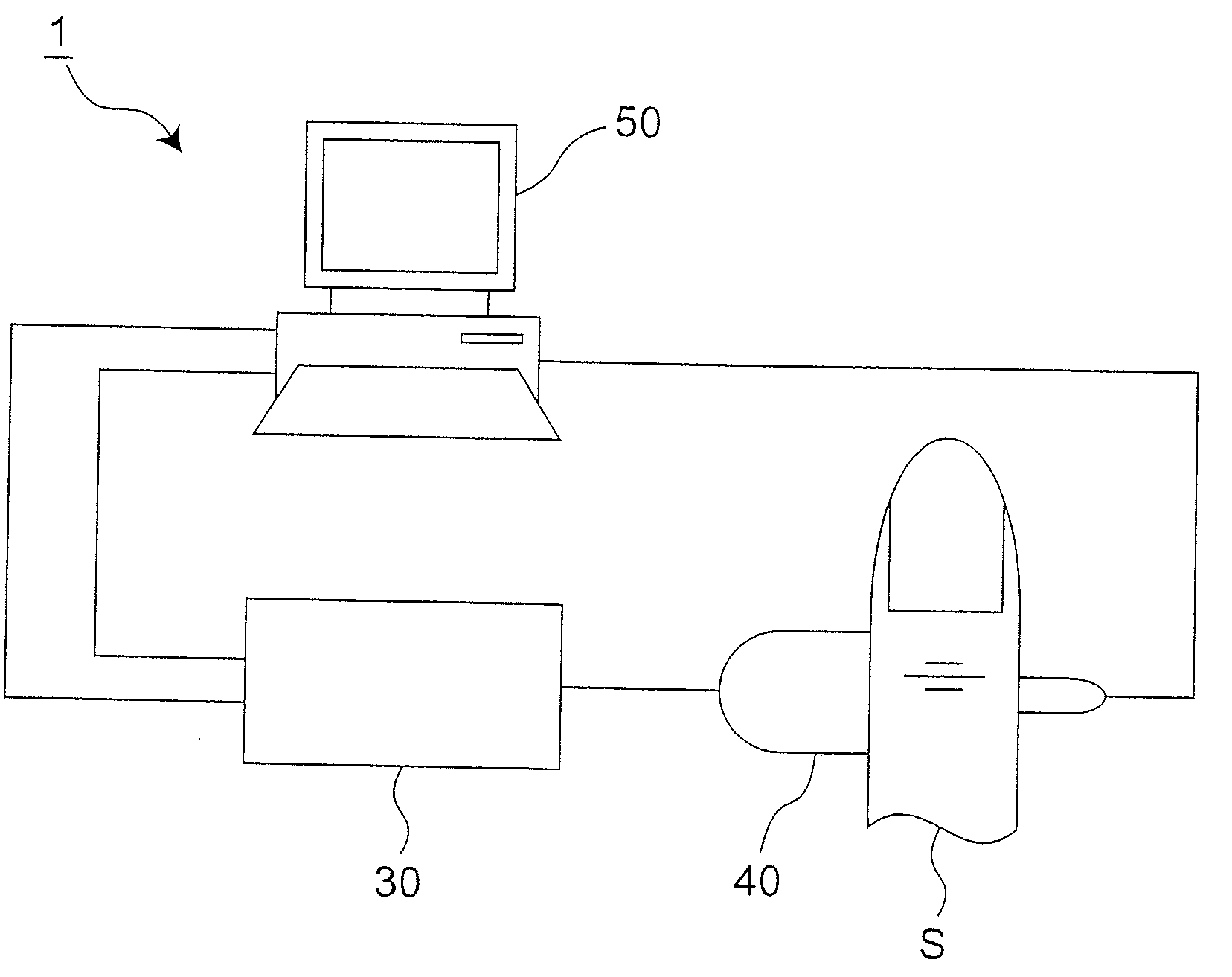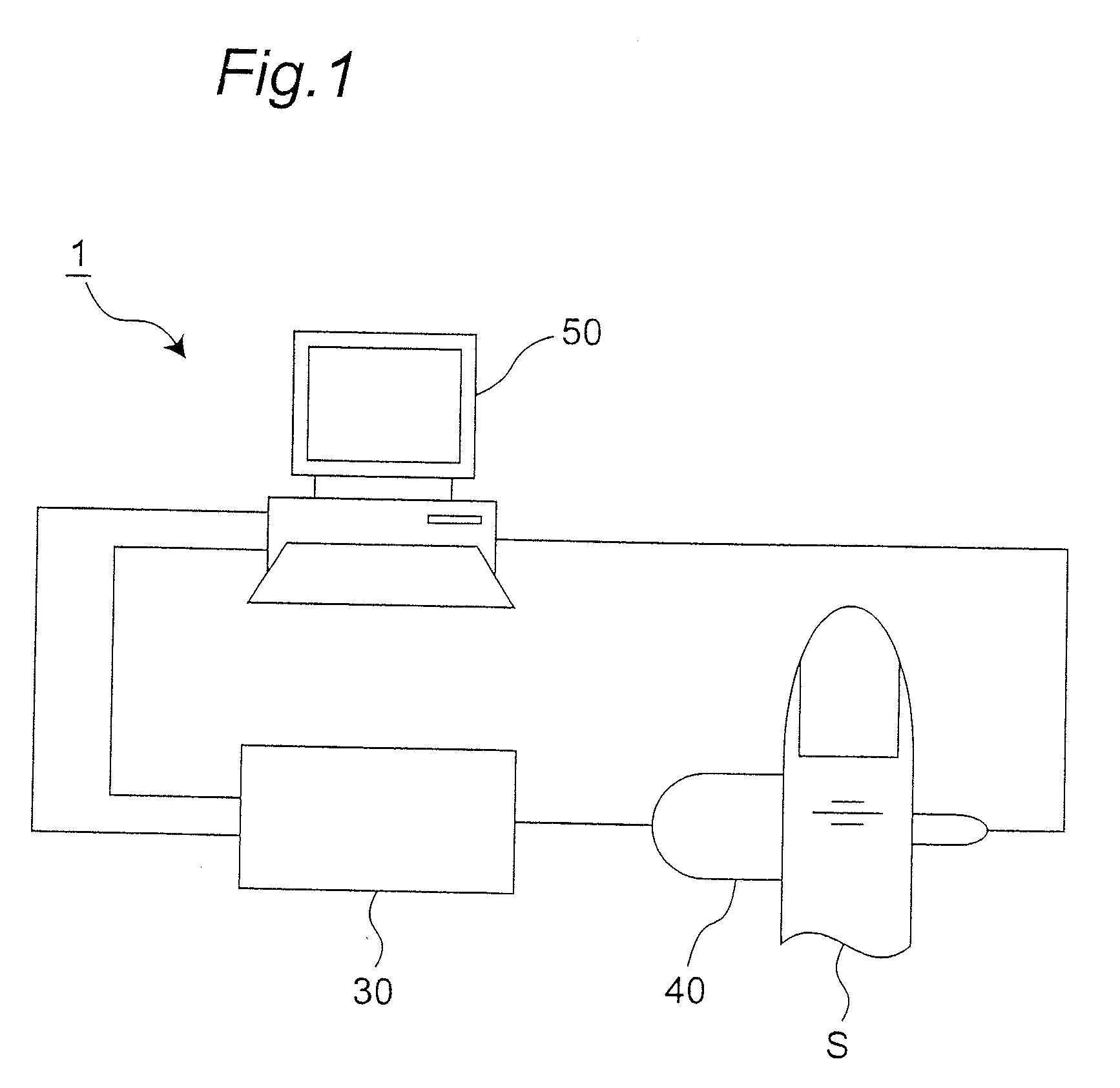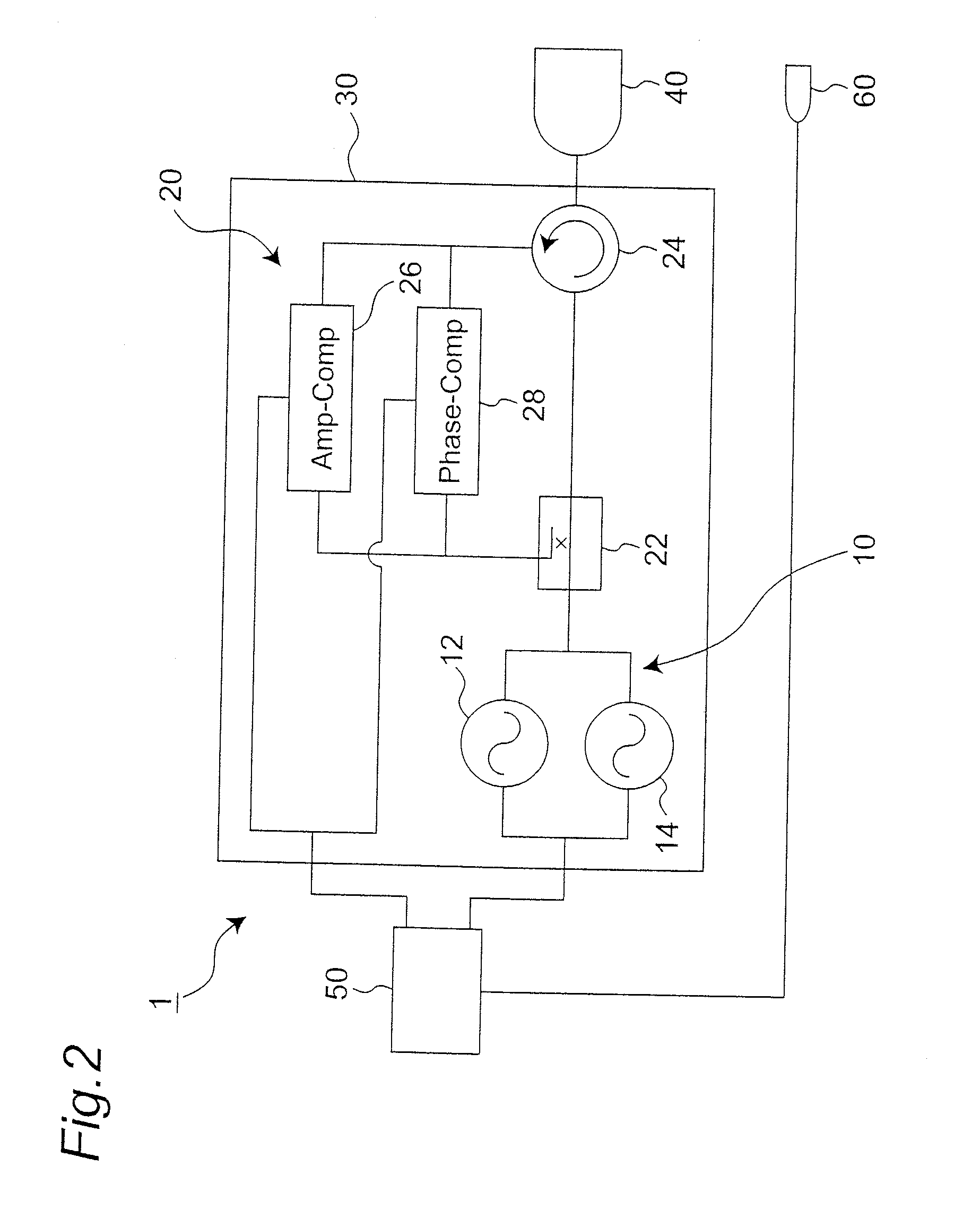System and method for measuring constituent concentration
a technology of constituent concentration and system, applied in the field of system and method for measuring constituent concentration, can solve the problems of inflicting pain on patients, raising possible infections for others,
- Summary
- Abstract
- Description
- Claims
- Application Information
AI Technical Summary
Benefits of technology
Problems solved by technology
Method used
Image
Examples
embodiment 1
[0048]FIG. 1 is a schematic view illustrating a first embodiment of a measuring system according to the present invention. Also, FIG. 2 is a block diagram illustrating components of the measuring system shown in FIG. 1. The measuring system 1 of FIGS. 1 and 2 generally includes an oscillation-detection apparatus 30, which includes an oscillator 10 outputting an electromagnetic wave having variable frequency between 5 GHz and 300 GHz, towards a specimen (test body) S such as user's finger, and a detector 20 detecting the electromagnetic wave reflected at the specimen S. Also, the measuring system 1 includes a cavity resonator 40 contacting with the specimen S, which is connected to the oscillation-detection apparatus 30, and a processor 50 such as a personal computer for driving the oscillator 10 of the oscillation-detection apparatus 30 and also for processing data signals from the detector 20. Further, the measuring system 1 preferably includes a thermal sensor 60 for measuring tem...
embodiment 2
[0074]Next, a second embodiment of the measuring system according to the present invention will be described herein. The measuring system 2 of the second embodiment has a structure similar to that of the first embodiment except that a complex permittivity (relative permittivity) of the specimen is used, rather than the reflection coefficient, to estimate the serum glucose concentration. Therefore, duplicate description is eliminated for the similar structure. Like reference numerals are used for like components for the present embodiment.
[0075]In general, the reflection coefficient (R) can be expressed by the reflection power (Γ) and the reflection phase (Φ) in the following equation.
R=Γ×exp(i×Φ)
wherein “i” is an imaginary unit.
Also, the complex permittivity (∈) can be expressed as a function of the reflection coefficient (R).
∈=F(R)
Thus, the complex permittivity (∈) can be calculated by measuring the reflection power (Γ) and the reflection phase (Φ). Therefore, as the reflection pow...
PUM
 Login to View More
Login to View More Abstract
Description
Claims
Application Information
 Login to View More
Login to View More - R&D
- Intellectual Property
- Life Sciences
- Materials
- Tech Scout
- Unparalleled Data Quality
- Higher Quality Content
- 60% Fewer Hallucinations
Browse by: Latest US Patents, China's latest patents, Technical Efficacy Thesaurus, Application Domain, Technology Topic, Popular Technical Reports.
© 2025 PatSnap. All rights reserved.Legal|Privacy policy|Modern Slavery Act Transparency Statement|Sitemap|About US| Contact US: help@patsnap.com



